Update: September 2, 2013 Congratulations to Annie D., Whitney and Jeni R. who won a free copy of this app. Enjoy!
I recently received a copy of “Hear2Read” and was so excited to go through it. Not only does it incorporate some really fun reinforcers–the kind that will keep kids going with a drill that they might otherwise abandon–but it addresses a need I’ve had in the therapy room that I haven’t seen covered already.
Hear2Read focuses on phonemic awareness tasks, beginning with the simple (appropriate for 4yrs+) such as breaking down a compound word, to the much more complex change of changing the vowel within a word or changing a blend within the word. This is how it works. The screen will show the word with a picture, for example “cupcake.” Touch the screen and the melodious voice says the prompt, “Say (word), but don’t say (portion of the word).” There are seven levels, each with a progressively more difficult task along these lines.
Level 1: Compound word, “Say ‘cupcake,’ but don’t say ‘cake.'”
Level 2: Two syllable word, “Say ‘robber,’ but don’t say ‘ra.'”
Level 3: Usually one syllable words, “Say ‘made,’ but don’t say ‘m’.”
Level 4: One syllable words, deleting a sound makes a different word, “Say ‘toad.’ Say it again without the ‘d’.”
Level 5: One syllable words, changing a sound for a different word, “Say ‘bead,’ but instead of the ‘d’ say ‘t’.”
Level 6: Word contains a blend in any position and the change deletes a sound within the blend to create another real word, “Say ‘stop,’ but don’t say the ‘s’.”
Level 7: Words contains blends and task might include changing a sound within the cluster or the vowel in the word, “Say ‘brick,’ but instead of ‘i,’ say ‘a’.”
Once the prompt is given, a green arrow appears on the right of the screen. Touch it and it will ask, “Did you say (correct answer)?” The clinician or student will then record their answer with either a smile or frown face. If you had the correct answer a gold star will appear on the top of the screen. Stars are consolidated as you acheive more than 5 with the number appearing on the first star.
Why does this matter? Because the stars earn you tokens for games! Within settings you can check how many correct answers (gold stars) will earn you a game token, any where from 1-20. With the tokens you can choose to play either “Balloon Pop” in which you try to pop as many balloons as you can out of 50 or “Spider Squash” in which you smush a spider 5 times and receive a score based on attempts and time. It’s harder than you would think!
Other options:
Results can be sent as an email to the clinician or parent.
Settings allow for autorecord so students can listen to their own response and written word stimuli on/off.
Additional pros: In addition to the “game” feature that I think would be highly motivating, I appreciated that the pictures were cheerful without being overly young. Too often, we have students that are a few years behind on these tasks and it’s inappropriate to bring out “baby-looking” activities. Because the task is driven by an auditory stimulus, it’s really hard to rush through it. I like the fact that kids are forced to take time to consider their answer and listen to the correct one before you can move on.
Cons: I wish there were additional pictures to show the impact that the phoneme change had. It wouldn’t work for all levels, but for things like, “Say ‘handout,’ but don’t say ‘out’,” it would be great to show a hand. The same goes for the higher level tasks. The email feature is helpful, but there is no way to input and save a student so a clinician using this with more than one student would need to keep their own progress record.
The appis a great value, currently selling for $5.99 and available in the iTunes store, but I have THREE to give away for free! To enter, leave a comment below letting us know who handles phonemic awareness tasks such as these in your setting–SLP? Resource teacher or reading specialist? Parents? You have until midnight EST on September 1, 2013. Winners will be selected at random and notified by email. Good luck!
I received a copy of the app for review purposes, but all opinions expressed are strictly my own.


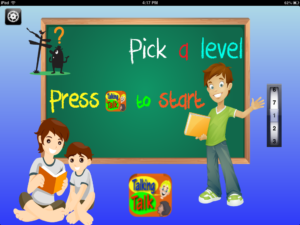
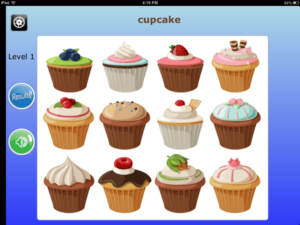
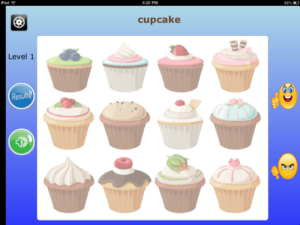
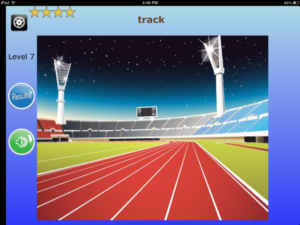
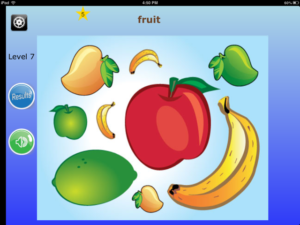
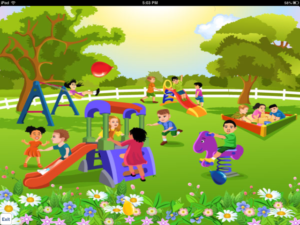
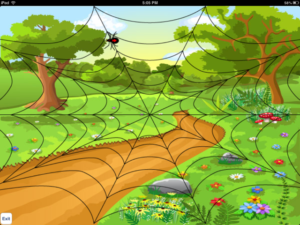




This Post Has 27 Comments
Think this app would be a great RTI for those students who are struggling with phonemic awareness.
I am a SLP at an urban public school. I think apps like these are wonderful for phonological and phonemic awareness are crucial for early literacy skills. I plan to target literacy through all modalities during therapies. The reinforcers built in to the app make the whole activity complete and motivational!
Thank you for sharing this!
I just went to a conference with a bunch of language arts teachers on literacy! This app sounds motivating and appropriate for all levels on phonemic awareness. I am just starting in the schools as an SLP for multiple disabilities,autism, and developmental delay for grades 6-8th but due to varying levels would still find this applicable, esp after the literacy institute I went to that discussed phonics and strategies for decoding! I also work in private practice and can see it applied there’s my clients as well. Thanks for sharing!
We (SLPs) address these skills indirectly. Our classroom teachers and reading specialists address these skills more directly.
I work at a preschool. We do double duty (SLPs and teachers) with teaching phonemic awareness.
These skills are addressed to varying levels by the SLP, early literacy support teacher and classroom teacher depending on the school.
This sounds perfect for my articulation students who are also struggling in reading. Most of them have phonemic awareness objectives on their IEPs already in addition to their articulation goals. Both the teachers and the SLPs work on phonemic awareness, but if the students don’t catch on in the early grades, it isn’t provided again later.
I am an SLP and I would love to use this app with my language disordered students, articulation disorder students and with students in the intervention process. It looks amazing!
Kinder teachers handle the general ed instruction for PA, but when a first grader is still really struggling and they are already receiving speech, I also do PA instruction. Would love to have this app!
Addressing phonemic awareness skills is a team approach. SLPs, teachers, and special education teachers all target these skills. This app looks like a good material to use and also very motivating to students.
These skills are addressed by the SLP, reading teacher, and, to a lesser extent, the classroom teachers.
I work in a hospital setting, am an SLP, and do this work with kids. Sounds like a great app!
SLP and Resource teacher work on these directly and the classroom teacher reinforces as possible
Definitely the SLP (myself in my setting). The classroom teacher with guidance from the reading specialist may also incorporate into some of their activities. I work with the hearing impaired population and this is a wonderful app,
The SLP (me) addresses phonological awareness in our school.
The SLPs at our clinic directly address phonological awareness for students with articulation. language and reading disorders.
I’m in a private clinic, so the SLP. What a great sounding app. Thanks for the info and the chance to get a copy!
As a private practice SLP, I’d love to use this with my kiddos who have a language disorder and need some help with phonemic awareness!
I work in a pre-school for kids with special needs, the majority have ASD and are great at reading by recognizing and memorizing words but when it comes to phonological awareness and speech sounds they don’t understand and can’t break the words down to think about the sounds and how the words are put together – I have a hard task trying to help them develop these skills. This app looks like it would be great for them – thanks for the chance to win it!
In our setting the teacher does some of this in Kindergarten and grade one, but then it’s mostly the resource teacher and the SLP – it kind of gets forgotten once most kids have passed by anyone having difficulty.
I’m very curious to see this app! Does it do more than just deletion/substitution tasks?
Hi Tanya
Thank you for your comment. The app only does the deletion/substitution starting from compound words and moving to bisyllabic words and then phonemes in initial, final and medial word positions. It allows for teaching of skills if a child has difficulty on a level. The auto record feature works well in allowing the child to self monitor and evaluate skills.
I would love to hear of additional tasks that you would like to see included.
Nikki
I’m trying to set up a free-SLP clinic in Fiji. Teachers here have a growing understanding of the importance of phonological awareness and increasing access to technology. Apps like this would help many kids struggling with basic literacy acquisition in this multilingual setting.
While working within the schools, I would team-teach phonemic awareness with the teacher of Spec Ed for those students that we shared.
We all do re inforcement of phonemic awareness.!!
I work closely with our general ed teachers and parapros for phonemic awareness lessons.
There’s not enough apps like this.
I’m in a private practice setting and currently have several clients that this app would be benificial for.
Comments are closed.